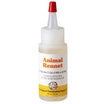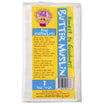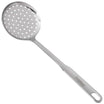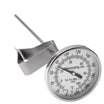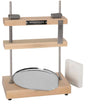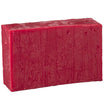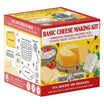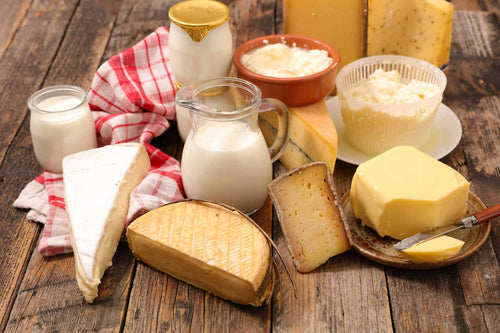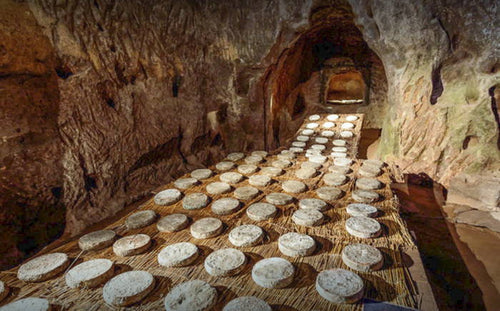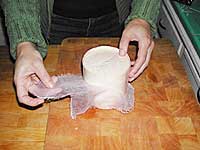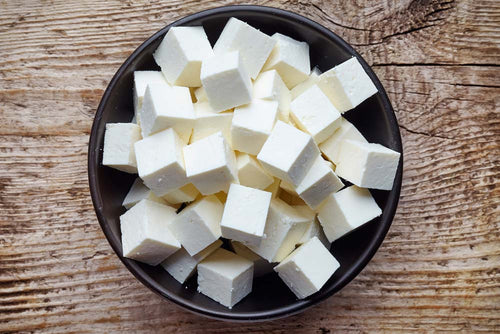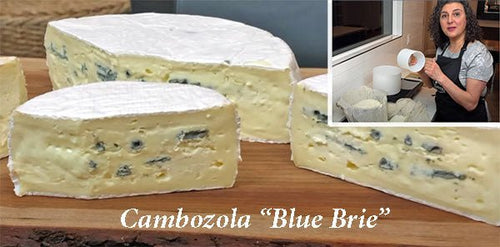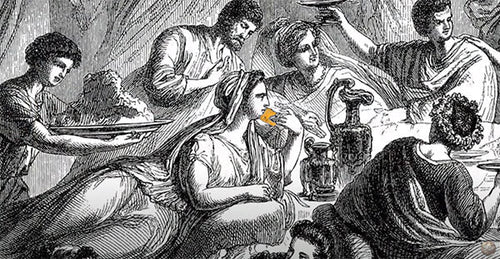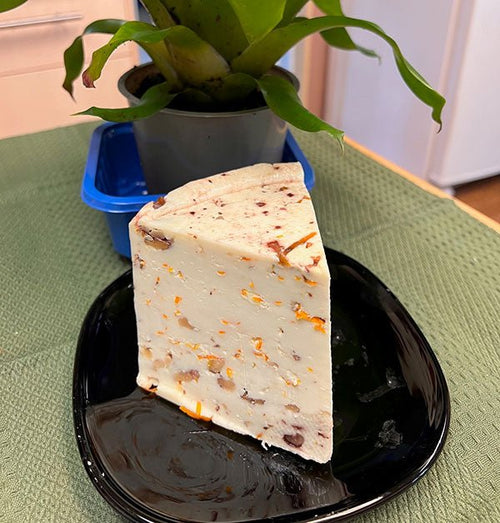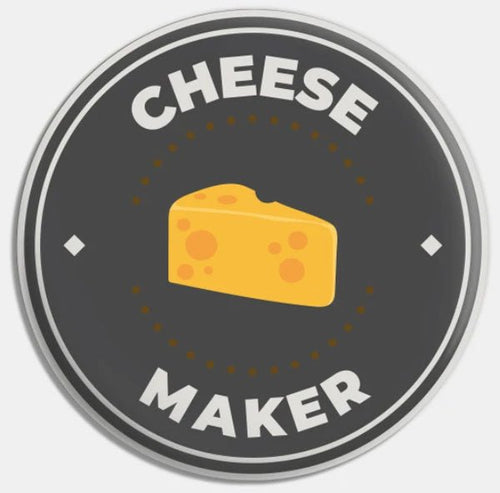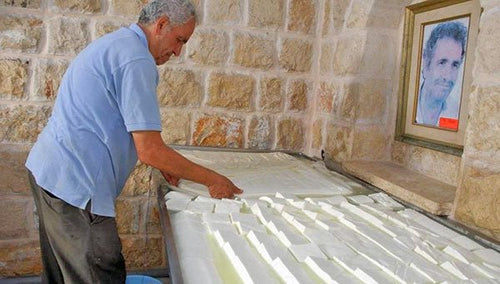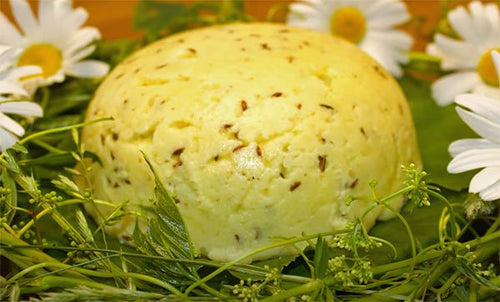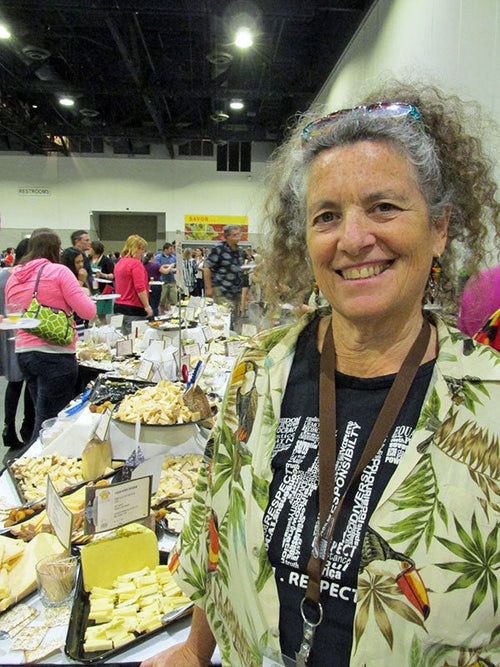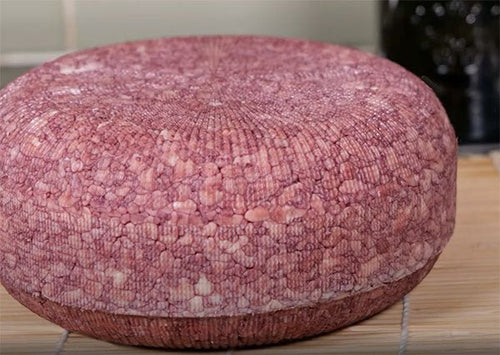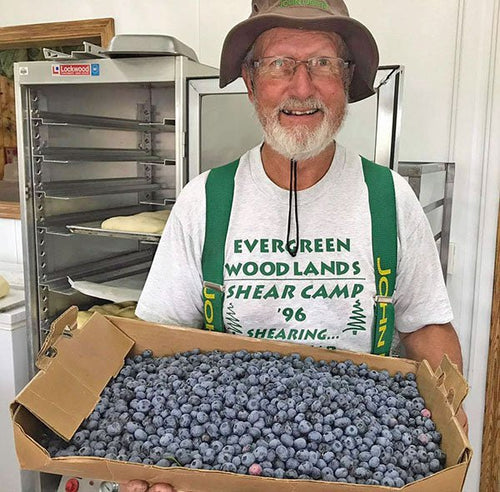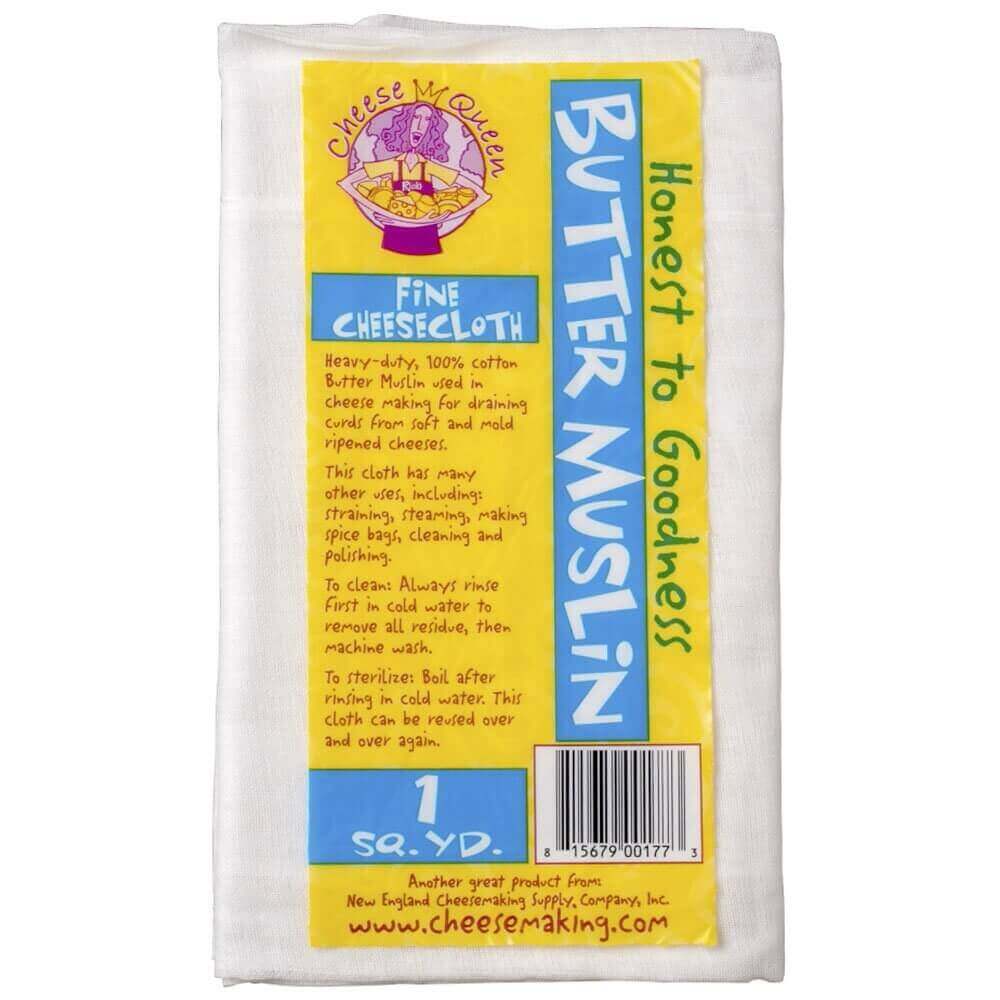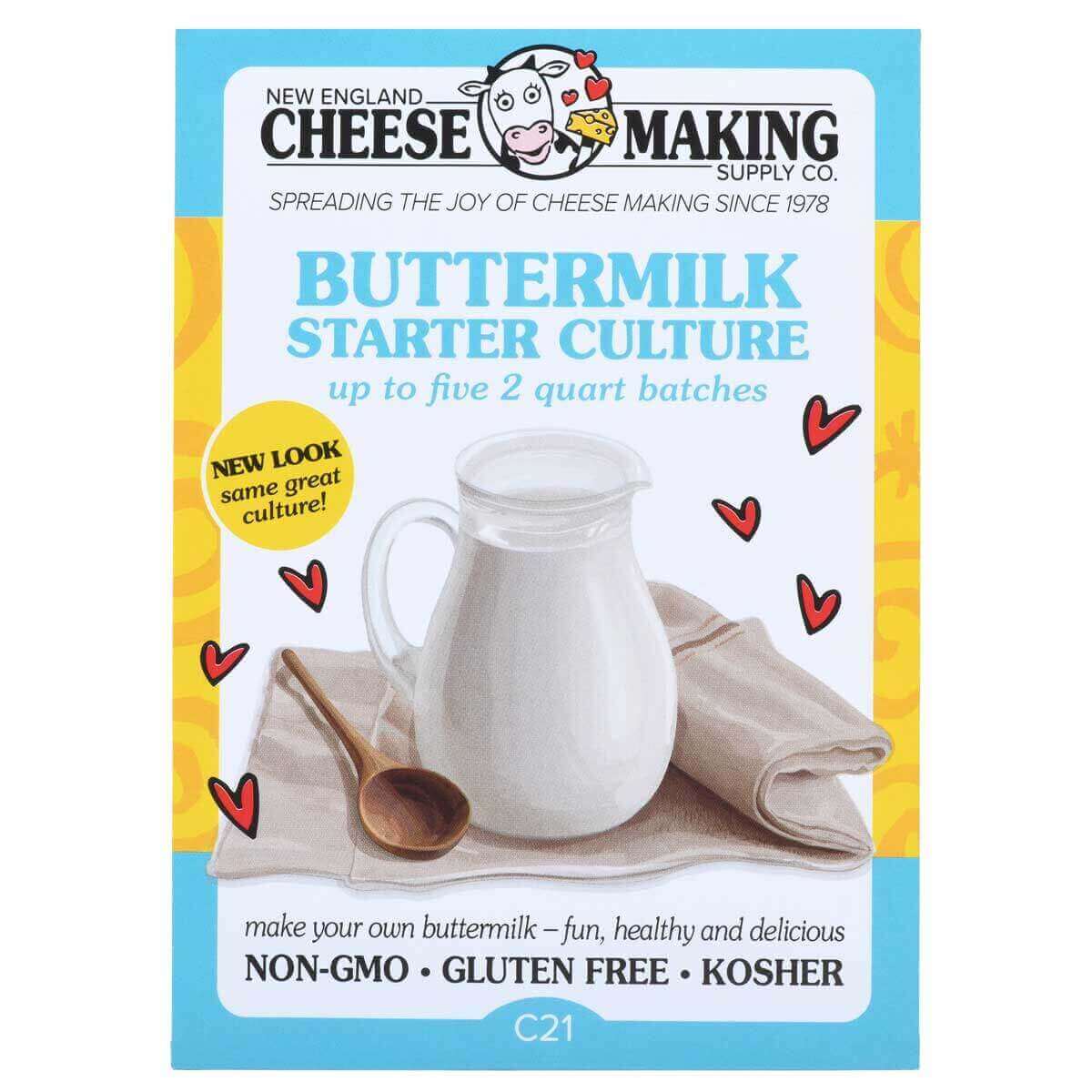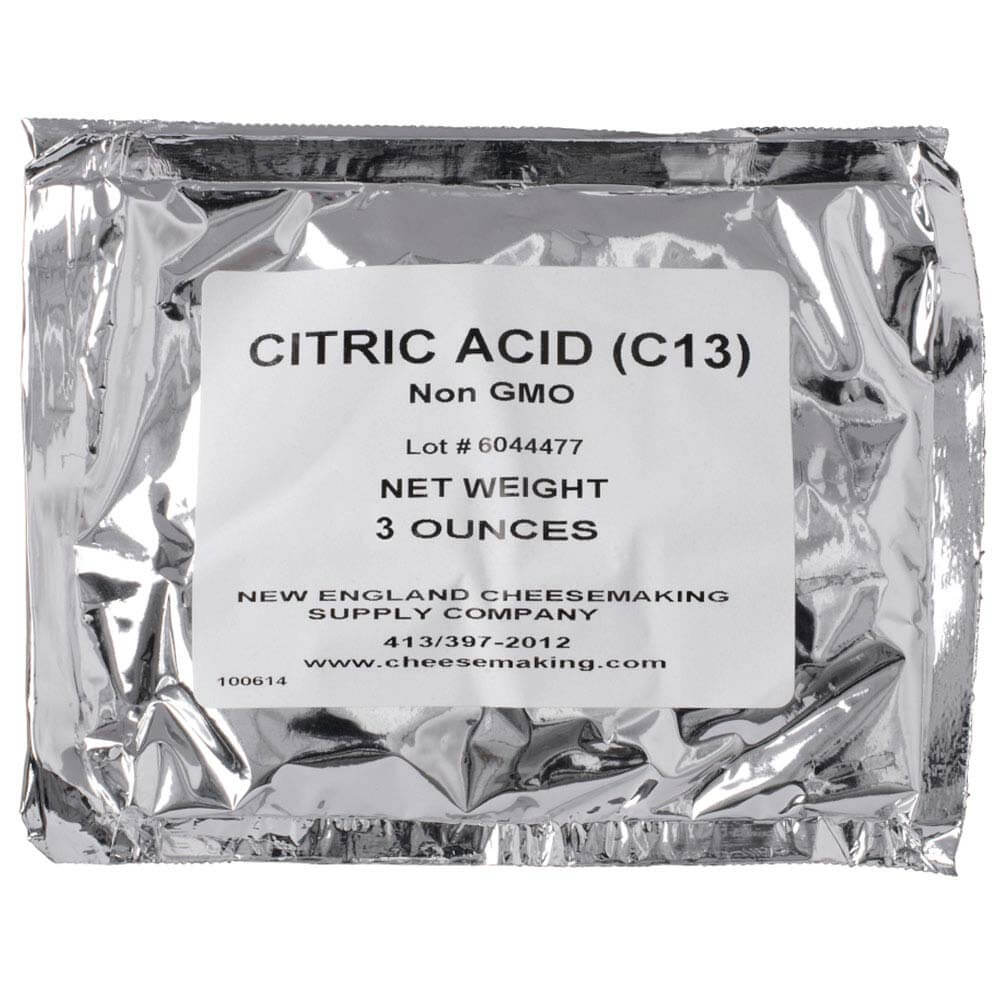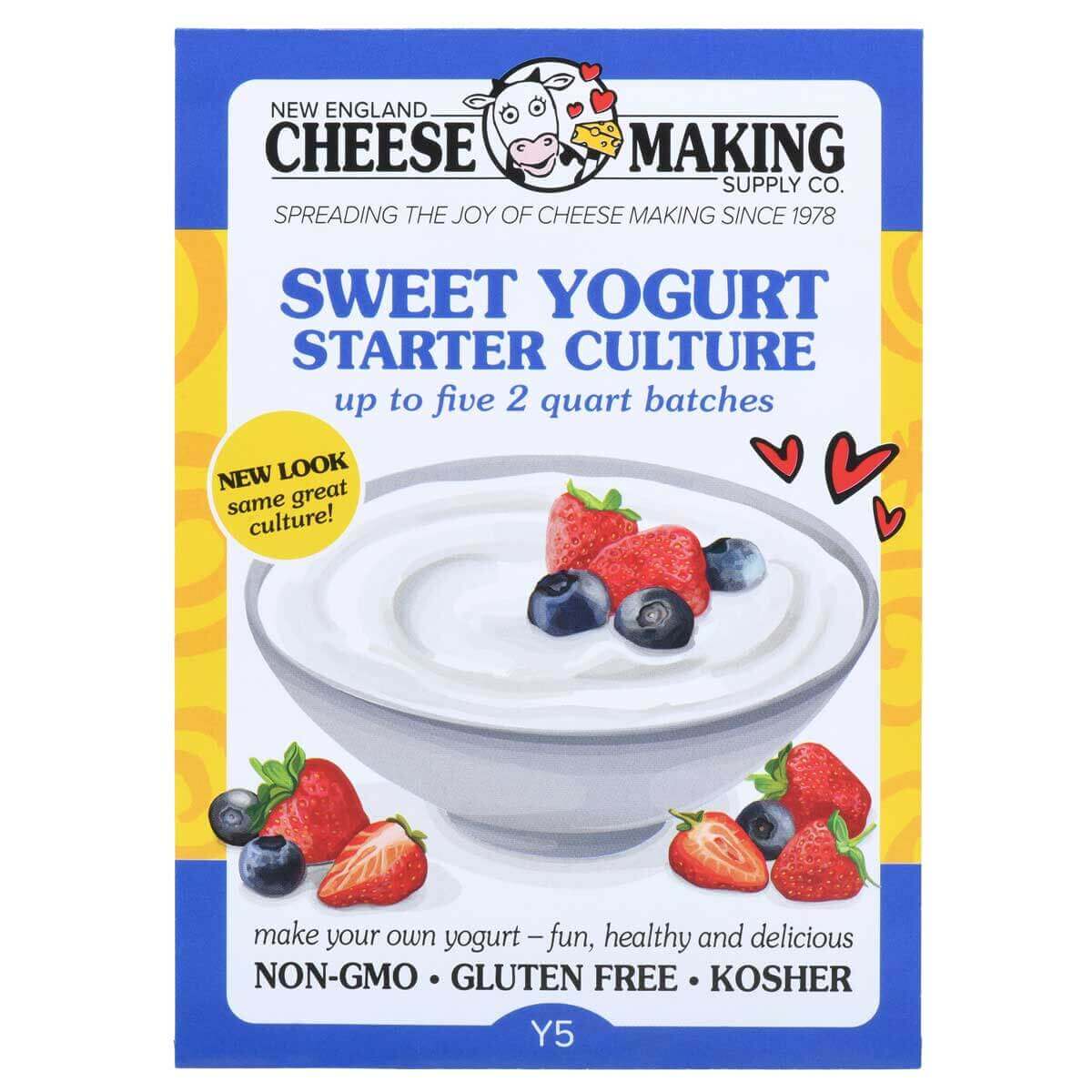Cheese Making Recipe of the Month
Cantal, From the mountains of France's Auvergne Region
This cheese has much in common with Englands great Cheddar.. Great efforts are taken to dry this cheese before entering the cave, resulting in a long aged cheese with an amazing character!
Cheese Making Questions & Answers
Q. Every time I make a hard cheese (per instructions in Rickis Home Cheese Making book), it sours during aging and appears to leak whey during aging. I let it sit for a week to surface dry before waxing. I use pasturized milk (but not ultrapasturized). I press according to the instructions for weights/times. Any ideas what I may be doing wrong? I make wine, beer, breads with no problem. Am I the only one that has this happen consistently? I age in winter in my 57 degree basement. Would vacuum sealing instead of wax help?
A. Your primary problem here is too much acid development either early (before molding) or late (after molding)
One problem is that if you have too much whey left in the curd when molding this will form a late acid development and the whey leaking out during drying stage is pointing to this
Also this could be caused due to excess ripening before rennet added, temperature control, re-check your process and if need be use less culture to start with or less ripening time.
Q. I have a friend who says that when she makes mozz in the microwave with store bought milk it comes out great. However, she also has a cow and when she tries to make it with the fresh milk on the stove and in the micro it doesn't come out right. She says that the cheese forms likeits supposed to but it's rubbery, squeaky and doesn't taste like mozzarella. Any suggestions?
A. Your friend is experiencing the difference between fresh milk and store processed milk
rubbery is a sign of too much rennet .. tell her to back off a bit on the rennet for her farm fresh milk. Also she will not need to work it so hard to get rid of the whey so go easier on the kneading.
Q. Hi Jim! I'd appreciate some help for this novice cheesemaker! Twice I've made the 30 min mozz. and neither time did it yield as much as the directions say. Both times it was a little over half a pound. I use raw milk and my rennet is Junket. Is there a problem with that? (I would like to use what I have if possible.) Also, it takes a lot longer to form a soft curd (hour or so) and the whey never gets clear as the pictures show. My results are a nice stretchy cheese, just not as much as hoped for. Is there any help for my situation or must I change the rennet? I saw in FAQs that someone asked if Junket can be used and you answered yes and no. Can you explain why?
A. The curd setting components from cows are of 2 types chymosin (rennet) and pepsin .. the pepsin is NOT what you want to use and Chymosin is our rennet is made up of 90 % chymosin, Junket is mostly pepsin. I have contacted them for specifics but they refuse to be clear.
Junket will set milk but not as reliably and not a very good firm curd, also in aging cheese it causes too much.
This is why the sets are slow and your yield poor
Q. Hi Jim! I'd appreciate some help for this novice cheesemaker! Twice I've made the 30 min mozz. and neither time did it yield as much as the directions say. Both times it was a little over half a pound. I use raw milk and my rennet is Junket. Is there a problem with that? (I would like to use what I have if possible.) Also, it takes a lot longer to form a soft curd (hour or so) and the whey never gets clear as the pictures show. My results are a nice stretchy cheese, just not as much as hoped for. Is there any help for my situation or must I change the rennet? I saw in FAQs that someone asked if Junket can be used and you answered yes and no. Can you explain why?
A. The curd setting components from cows are of 2 types chymosin (rennet) and pepsin .. the pepsin is NOT what you want to use and Chymosin is our rennet is made up of 90 % chymosin, Junket is mostly pepsin. I have contacted them for specifics but they refuse to be clear.
Junket will set milk but not as reliably and not a very good firm curd, also in aging cheese it causes too much.
This is why the sets are slow and your yield poor
Have a cheese making question, we're here for you: info@cheesemaking.com
News From Fellow Cheese Makers
Hi Ricki and Jim,
Just wanted to let you know what a pleasure it is doing business with you. My merchandise always comes quickly and I go through it like a kid at Christmas. I know, get a life! Took some classes with Jim Wallace and recommend them to anyone who is interested in cheese. He is a super guy and teacher and his wife is as well. Both very talented people. I'm delving more into my goat cheese now and looking forward to trying out some of what I learned. I'll let you know if the results are spectacular, and if they aren't, I'll be writing for advice!
Best regards,
Susan
A Recipe for Whey Pancakes
Once in a while it s a treat to be able to just throw all the warnings to the wind and use the flavor of something as unmistakable as bacon drippings. These pancakes are light and tender with a flavor that makes them absolutely the best ever. Makes 8 4 cakes, 2 servings:
- 1-1/3 cups all-purpose flour
- 1 teaspoons baking powder
- 1/2 teaspoon baking soda
- 1/4 teaspoon salt
- 1-1/2 tablespoons sugar
- 1 large egg, well beaten
- 1-1/2 cups whey
- 2 tablespoons bacon drippings, melted, plus 1/2 teaspoon for griddle
- Heat griddle to 375°. Whisk together flour, baking powder, baking soda, salt, and sugar in a medium bowl. Add eggs, buttermilk, and 2 tablespoons bacon drippings; whisk to combine. Batter should have small to medium lumps.
- Heat oven to 175°. Test griddle by sprinkling a few drops of water on it. If water bounces and spatters off griddle, it is hot enough. Using a pastry brush, brush remaining 1/2 teaspoon of bacon drippings onto griddle.
- Using ladle, , pour about 1/3 cups of pancake batter, in pools 2 inches away from one other. When pancakes have bubbles on top and are slightly dry around the edges, about 2 -1/2 minutes, flip over. Cook until golden on bottom, about 1 minute.
- Repeat with remaining batter, keeping finished pancakes on a heatproof plate in the oven. Serve warm.
- Any left overs can be cooled on a cookie rack and with wax paper between them, placed in a plastic freezer bag and frozen. To rewarm them put in the microwave for 15 seconds at a time until warmed through. Be careful not to over heat them. That makes them tough.
We've Been Making Cheese Like Crazy
Hi Ricki and all,
My husband Tony and I really enjoyed the cheesemaking class last month, and we've been making cheese like crazy. (Attached is a photo with Tony and our first three batches of cheddar!)
We do have a question: What is the best way to clean and reuse the cheesecloth and butter muslin? We've tried boiling it and putting it in the washing machine but still struggle with particles of cheese sticking to the cloth. Any advice would be greatly appreciated.
The easiest way to keep cheese cloth clean is to soak in a good dairy detergent as soon as you finish with the cloth.
Thank you!
Jen Norton
Please send your cheese making news & photos to: moosletter@cheesemaking.com
















